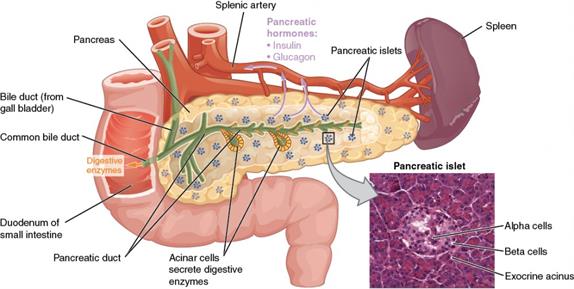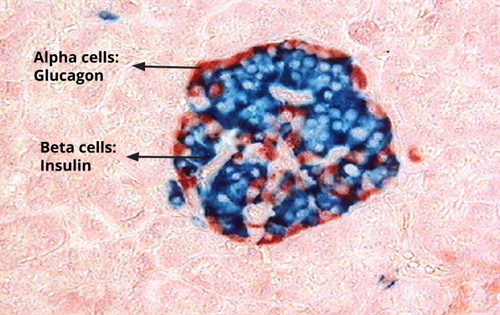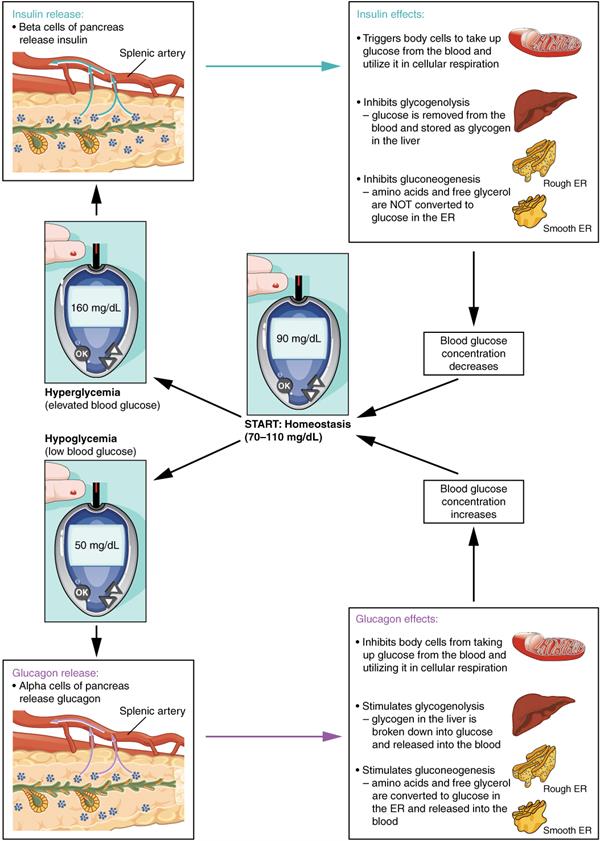
PUMPA - SMART LEARNING
எங்கள் ஆசிரியர்களுடன் 1-ஆன்-1 ஆலோசனை நேரத்தைப் பெறுங்கள். டாப்பர் ஆவதற்கு நாங்கள் பயிற்சி அளிப்போம்
Book Free DemoHave you ever felt shakiness and sweating in your body with severe hunger? This condition is due to low blood sugar levels in your blood. But after you eat, your blood sugar level will increase and eventually, after some time, it will decrease again.
This decrease in blood sugar level is due to the hormone called insulin. It works as a "key" to allow glucose to enter the body's cells and be used as an energy source. The pancreas secretes this hormone.
The pancreas is a long and delicate organ. It is surrounded by the spleen, liver, and small intestine and is situated behind the stomach. It is referred to as a Heterocrine gland because it contains both exocrine (duct) and endocrine (ductless) components.

Pancreas - The heterocrine gland
The pancreas is an endocrine gland with specialised groupings of cells called Islets of Langerhans that secrete various hormones. In a normal human pancreas, about \(1\) to \(2\) million Islets of Langerhans make up only \(1\) to \(2\)% of the pancreatic tissue.
The pancreas consists of acinar cells, which is the functional unit of the exocrine pancreas. Acinar cells synthesis, store and also secrete the digestive enzymes.
There are four types of cells in the Langerhans islets:
- Alpha cells
- Beta cells
- Delta cells
- Pancreatic polypeptide cells or PP cells or F-cells

Islets of Langerhans - alpha and beta cells
The alpha cells secrete the hormone glucagon, while the beta cells secrete the hormone insulin.
In human body, the two hormones, insulin and glucagon work together to maintain blood glucose homeostasis.
Functions of insulin:
- Insulin converts glucose to glycogen which is stored in the liver and skeletal muscles.
- It promotes the transport of glucose into the cells.
- Insulin promotes the synthesis of protein from amino acids in tissues.
- It decreases the concentration of glucose in the blood.
- It increases the synthesis of fat in the adipose tissues.
Functions of glucagon:
- Glucagon helps in the breakdown of glycogen to glucose in the liver.
- Glucagon increases blood glucose levels.
The video explaining the location and hormone secretion of pancreas
Disorders related to the activity of the pancreas
Hyperglycemia: When insulin secretion is reduced, the conversion of glucose to glycogen is disrupted, increasing blood sugar levels. Sugar is sometimes found in urine samples.
Hypoglycemia: Excess insulin secretion lowers blood sugar levels.
Note: Long-term hyperglycemia causes diabetes mellitus, characterised by the loss of blood glucose through urine and the development of harmful compounds known as ketone bodies.

Hyperglycemia and hypoglycemia
Different hormones released by Islets of Langerhans and their functions:
|
Type of cells
|
Hormone released
|
Functions
|
|
Alpha cells
|
Glucagon |
Converts glycogen to glucose. Thus, it increases blood sugar levels.
|
| Beta cells | Insulin | Lowers blood sugar levels by initiating the storage of excess glucose in the form of glycogen in the liver and muscles. Increases glucose oxidation to release energy. |
| Delta cells | Somatostatin | Somatostatin inhibits insulin and glucagon secretion. It is also called growth hormone inhibiting hormone (GHIH). |
https://upload.wikimedia.org/wikipedia/commons/thumb/6/6e/Blausen_0701_PancreaticTissue.png/2048px-Blausen_0701_PancreaticTissue.png
Reference:
https://upload.wikimedia.org/wikipedia/commons/thumb/0/05/Human_pancreatic_islet.jpg/1024px-Human_pancreatic_islet.jpg
https://upload.wikimedia.org/wikipedia/commons/d/d6/1822_The_Homostatic_Regulation_of_Blood_Glucose_Levels.jpg
https://upload.wikimedia.org/wikipedia/commons/d/d6/1822_The_Homostatic_Regulation_of_Blood_Glucose_Levels.jpg
https://courses.lumenlearning.com/suny-ap2/chapter/the-endocrine-pancreas/